Resetting the Table – Design Thinking Applied to the Small Restaurant User Experience
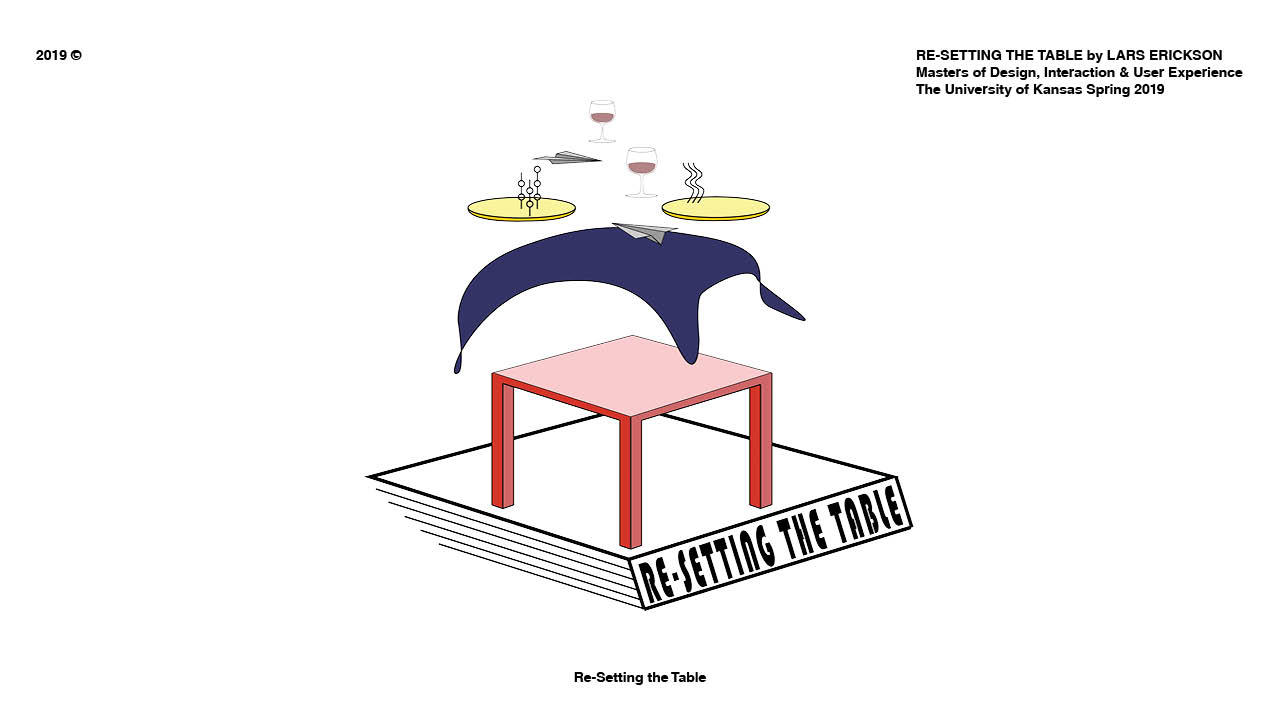
"Re-setting the table” is a 3 day workshop that equips restaurant starters with a customer experience centered process that enhances the success rate of starting and operating their restaurant.
This is a condensed version of my thesis presentation. For access to the full document please click the following link ‐ Resetting the Table
Guiding Questions:
- Are there identifiable common factors that appear amongst most of restaurant failures?
- If so, by identifying them, could a short course of training and istruction prevent them?
- In addition to combatting these failures, could this course be paried with applicable integrative design thinking tools to act preventaively for uncovering these factors?
Context:
“In Kansas, 51.0% (606,966) of people are employed at privately owned businesses; 68, 282 of these individuals are employed in food service” (Statistics of U.S. Businesses, 2016)
“In 2016 there were 2,054 small business startups. In the same period 1,840 establishments closed” (Kansas 2018 Small Business Profile)
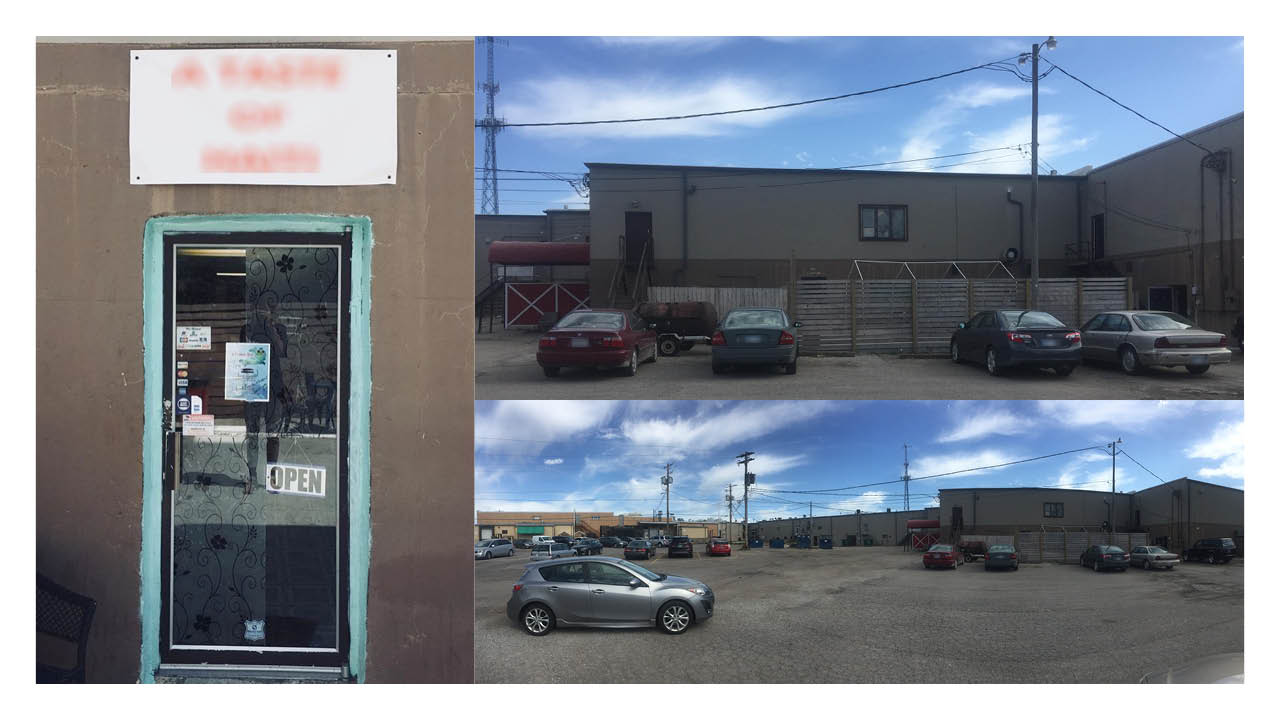
This is an image of a small locally owned resturant located in the back of a parking lot. No matter how great the food, due to poor signage (among other things) the restaurant is hardly visible. Visiting, tasting, and seeing this business fail was a catalyst for this project. What made this business fail?
Design Thinking + Restaurant Operations
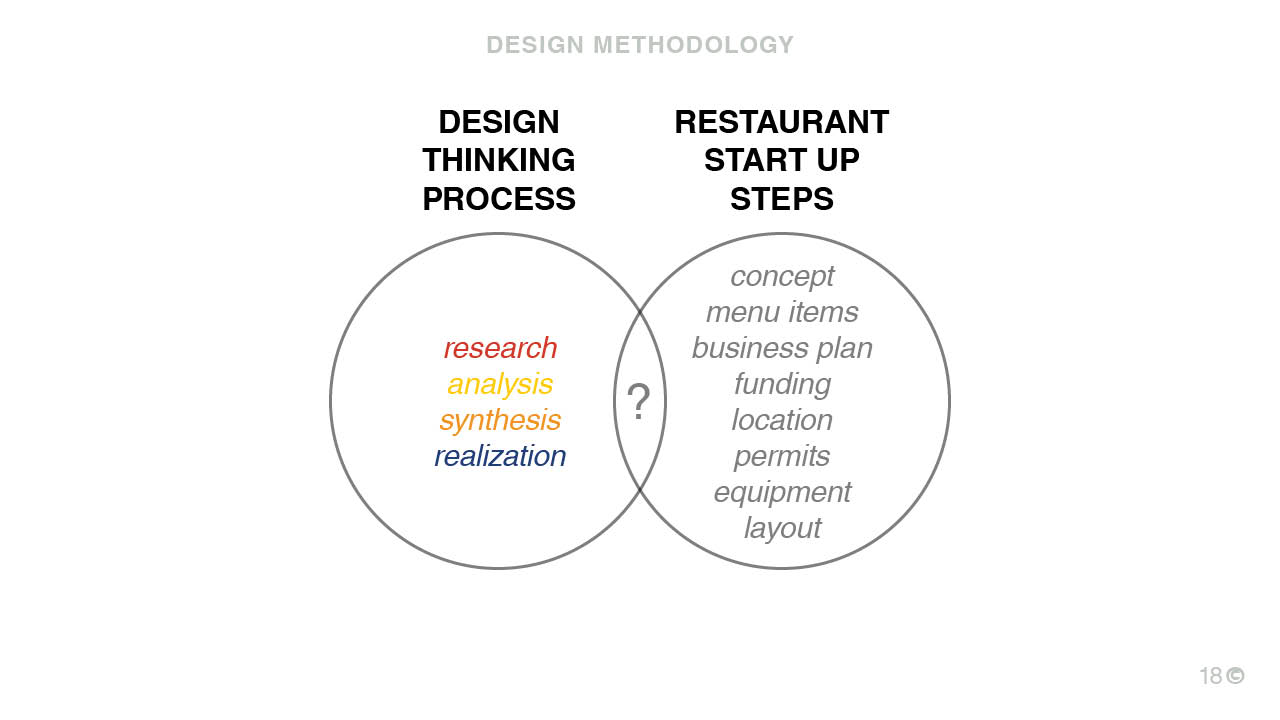
Starting a restaurant is a complicated process. How could design thinking fit into the already established way of getting started?
Research, Analysis, and Synthesis
Interview Stats
- 7 in person interviews
- 4 online questionnaires
Restaurant Stats
- 1.5 y/o to 24 y/o
- 1- 60+ employees
- 1 closed restaurant
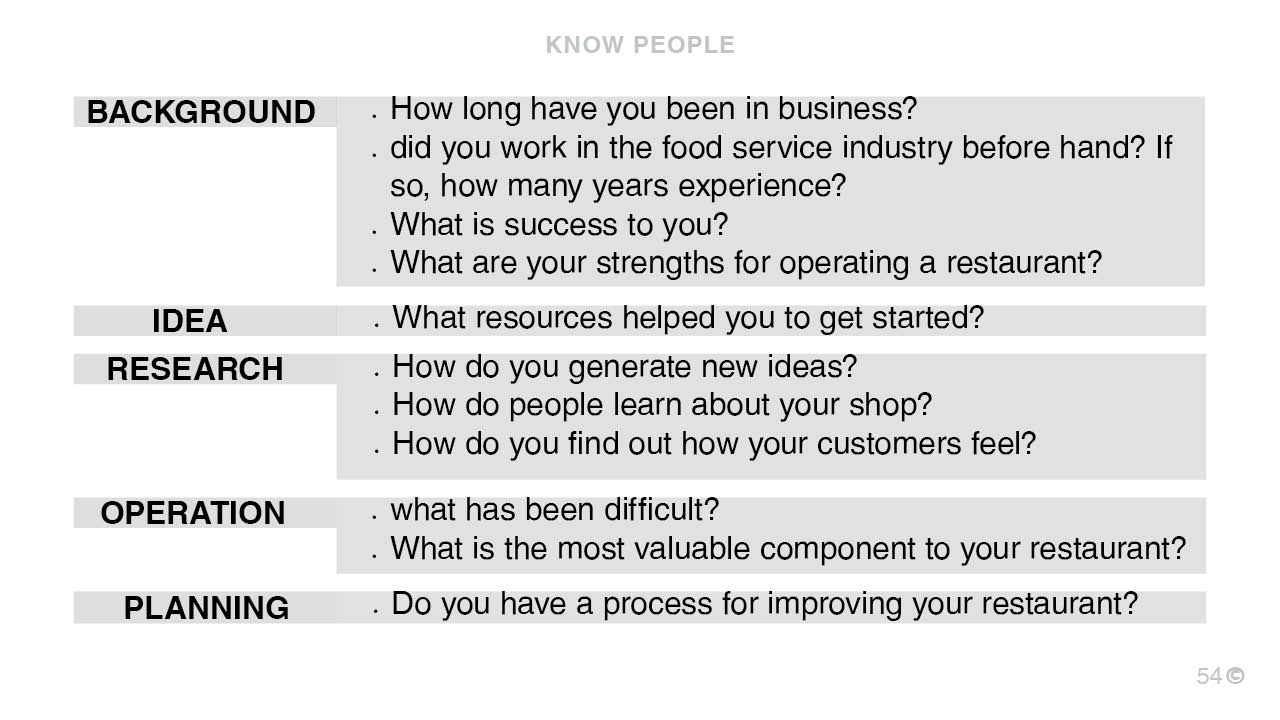
These were the interview questions used to gather data on restaurant operations
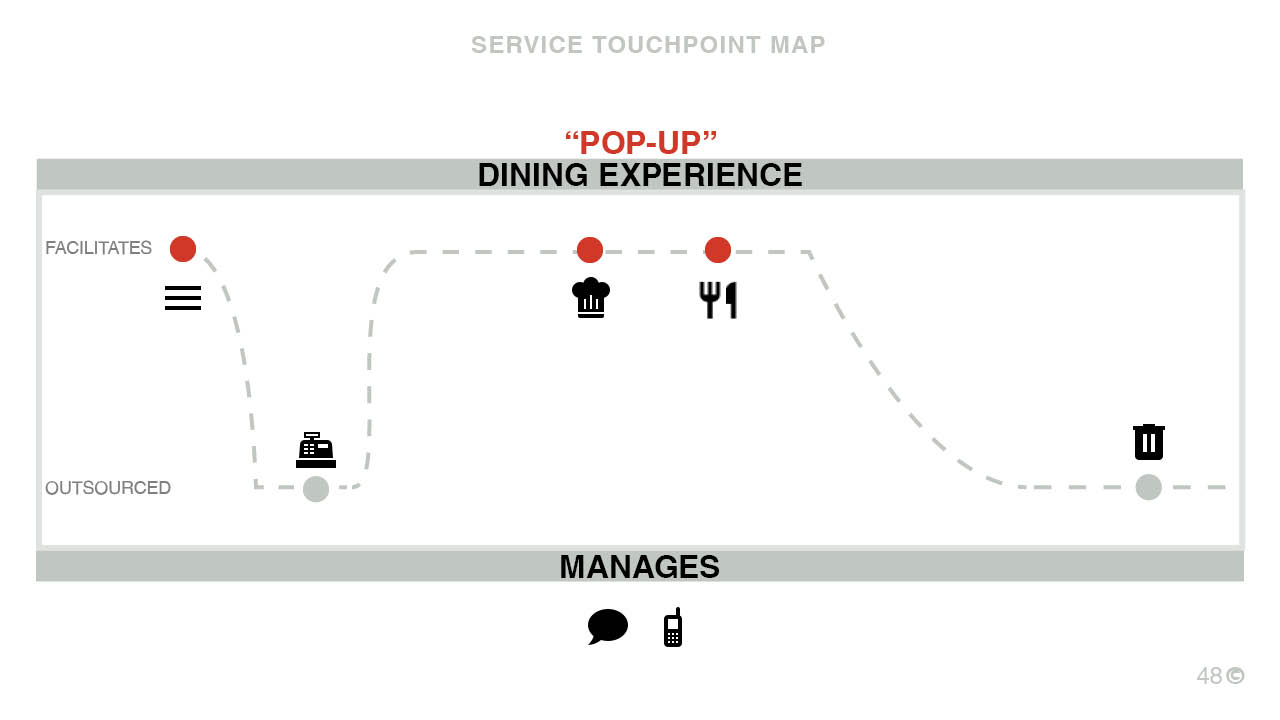
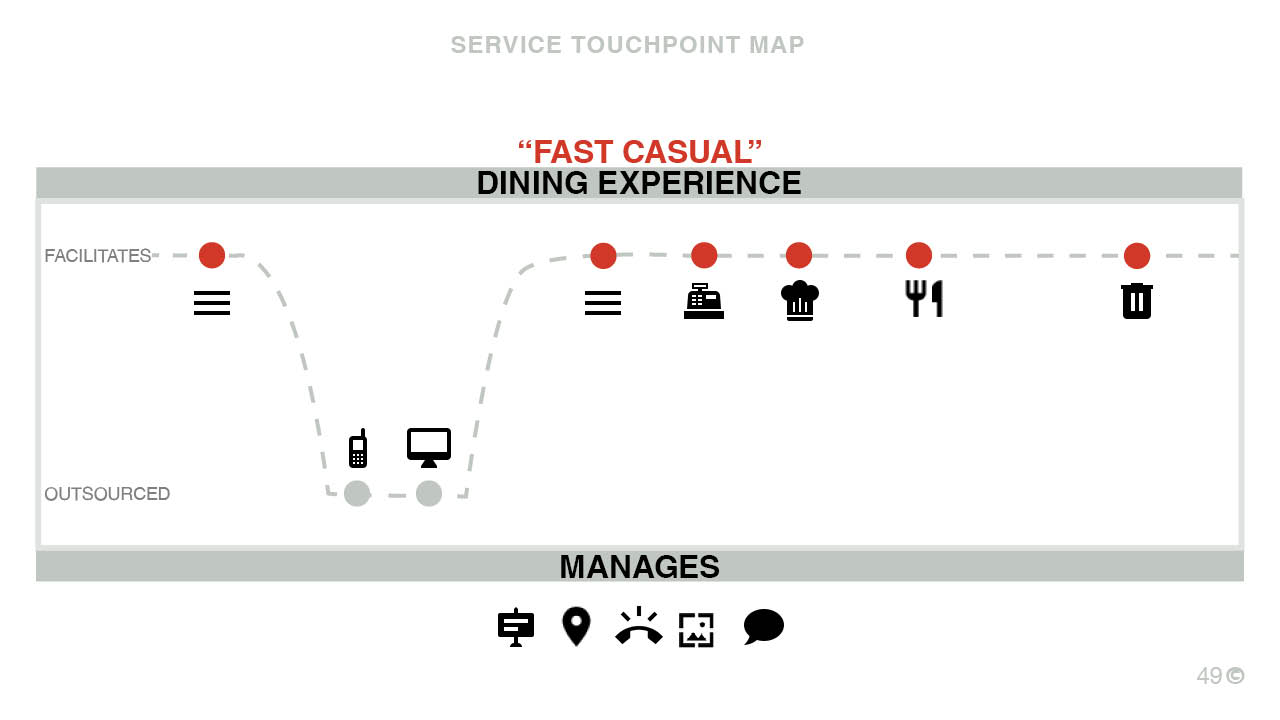
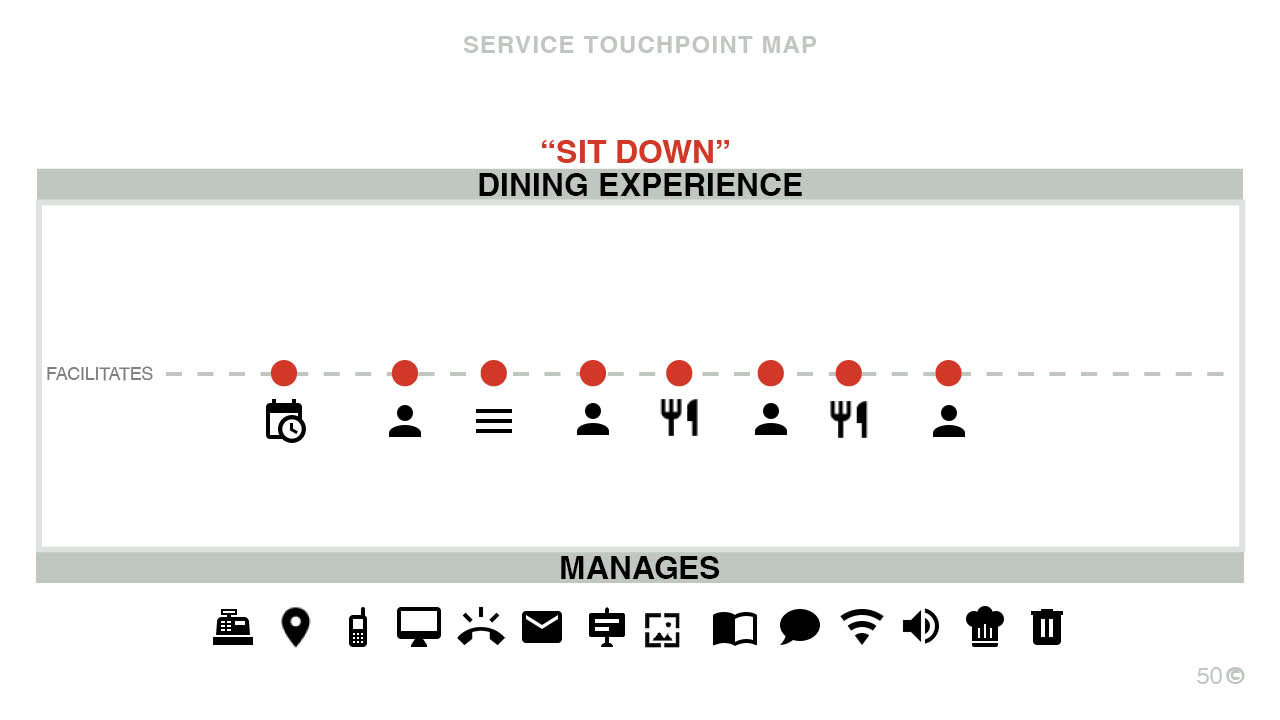
These are service touchpoint maps used to better understand the different types of restaurants and their internal/ external operation
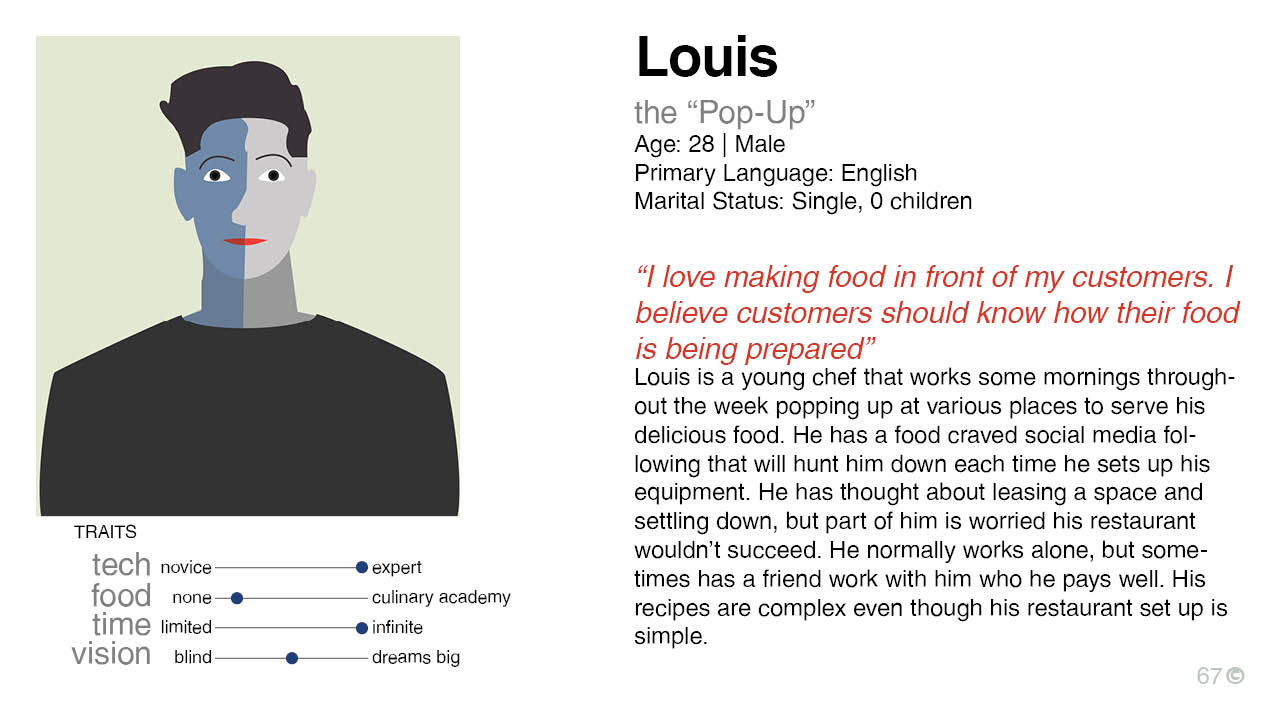
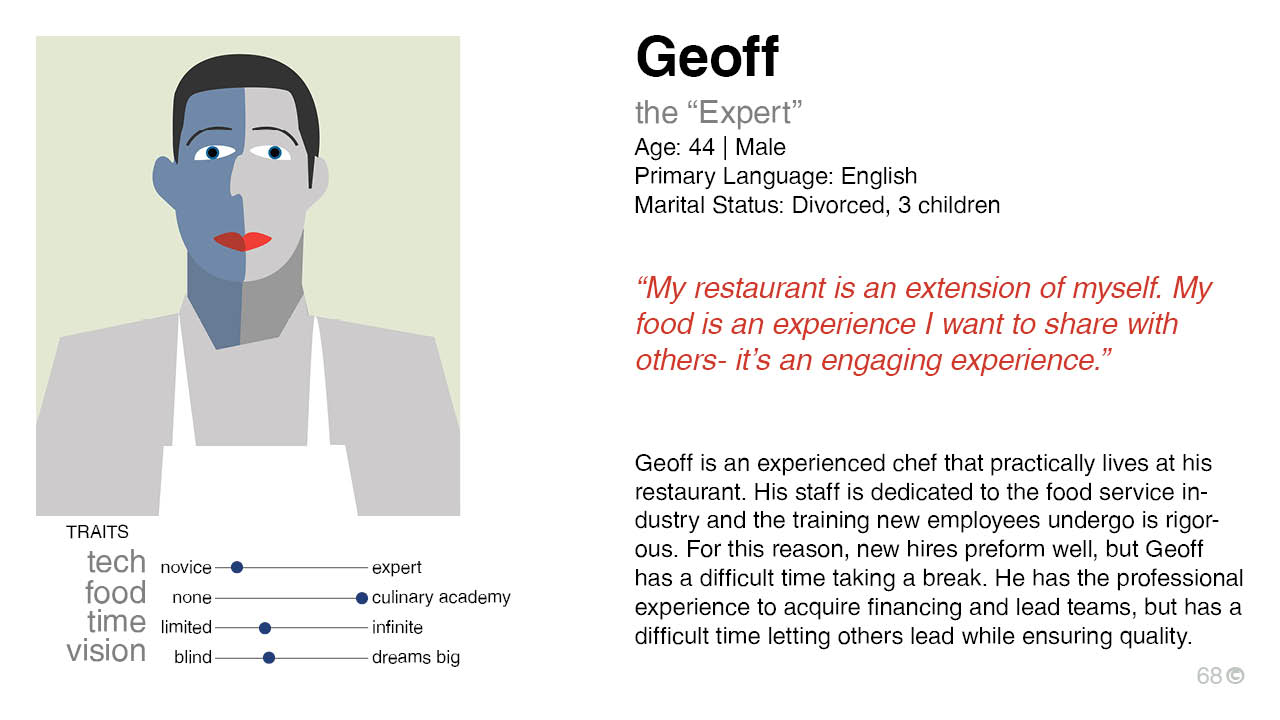
These personas were created in order to synthesize and communicate the interview data collected

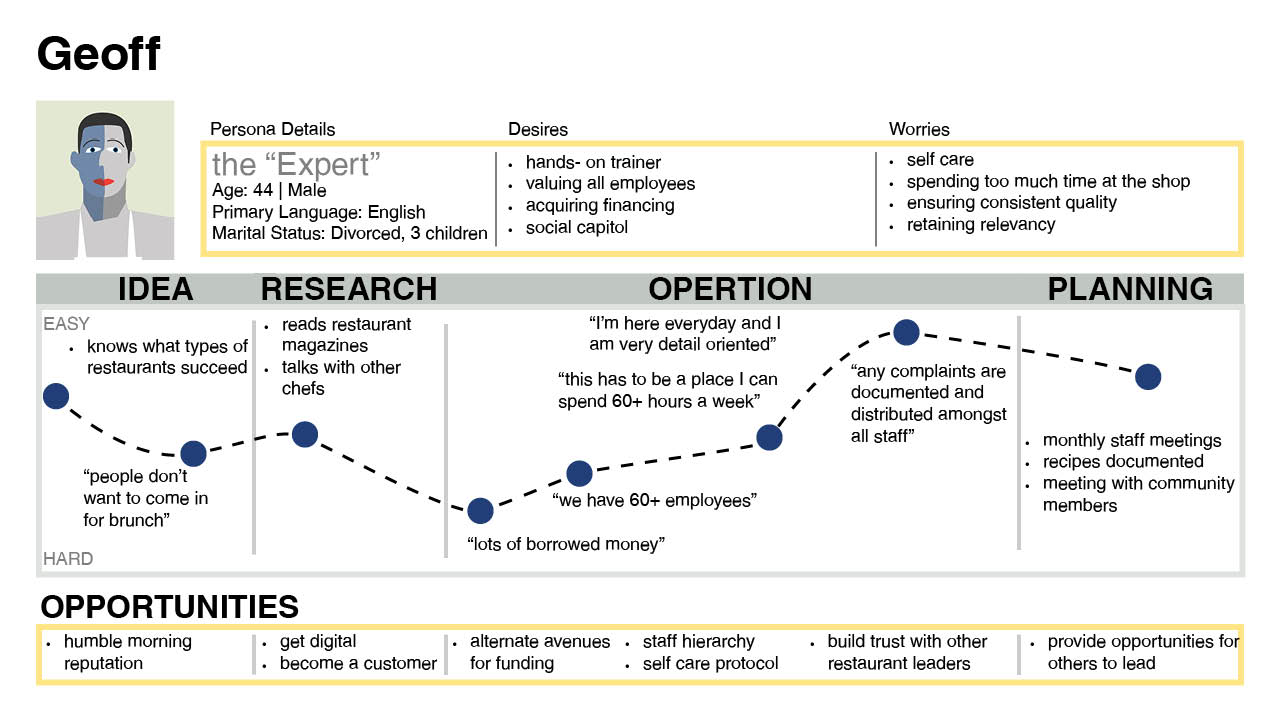
These journey maps were created in regards to the persona's experience with starting and operating their restaurants. Insights were derived from moments on their journeys.
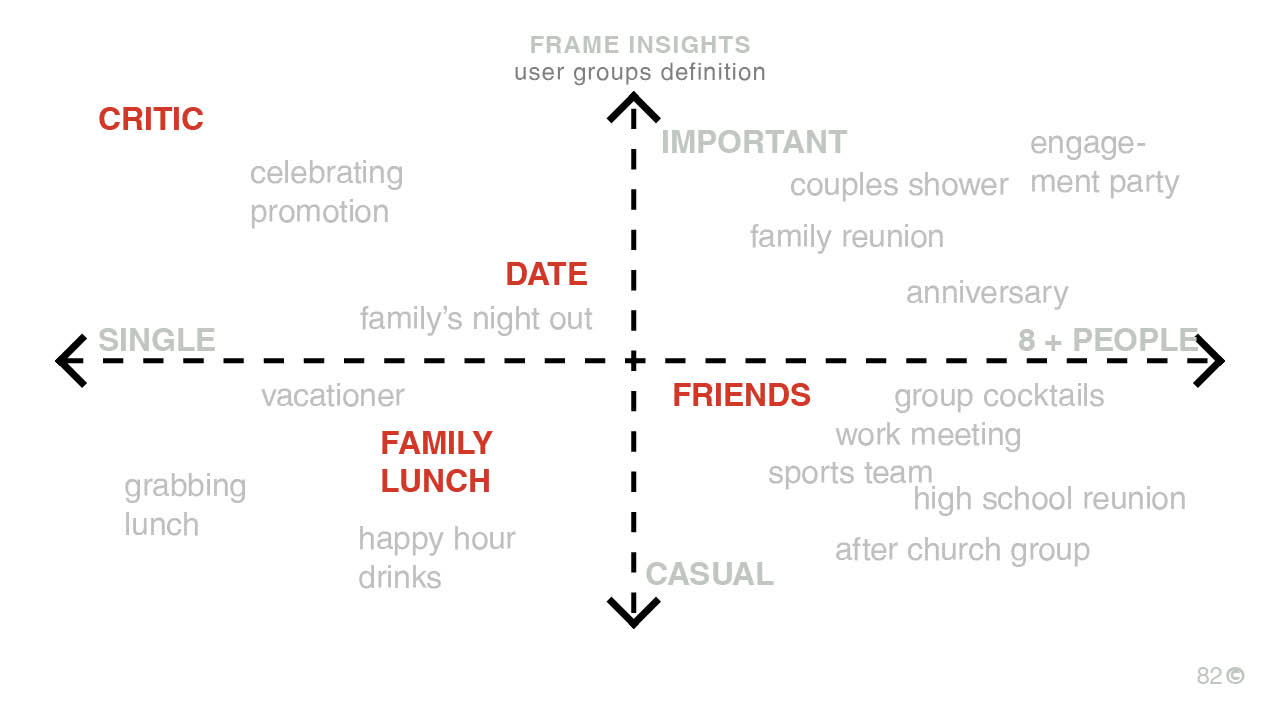
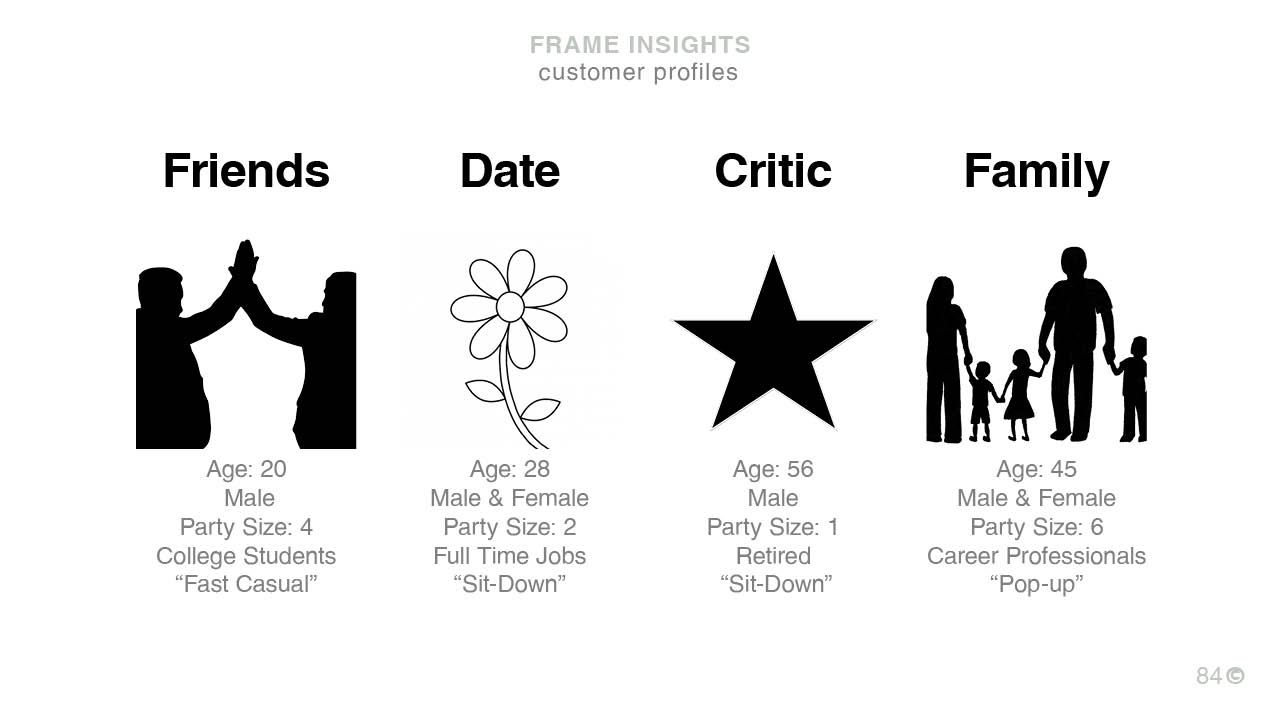
Understanding one's customers is an important aspect to operating a restaurant. It is important to understand what types of customers one has and how to better serve them.
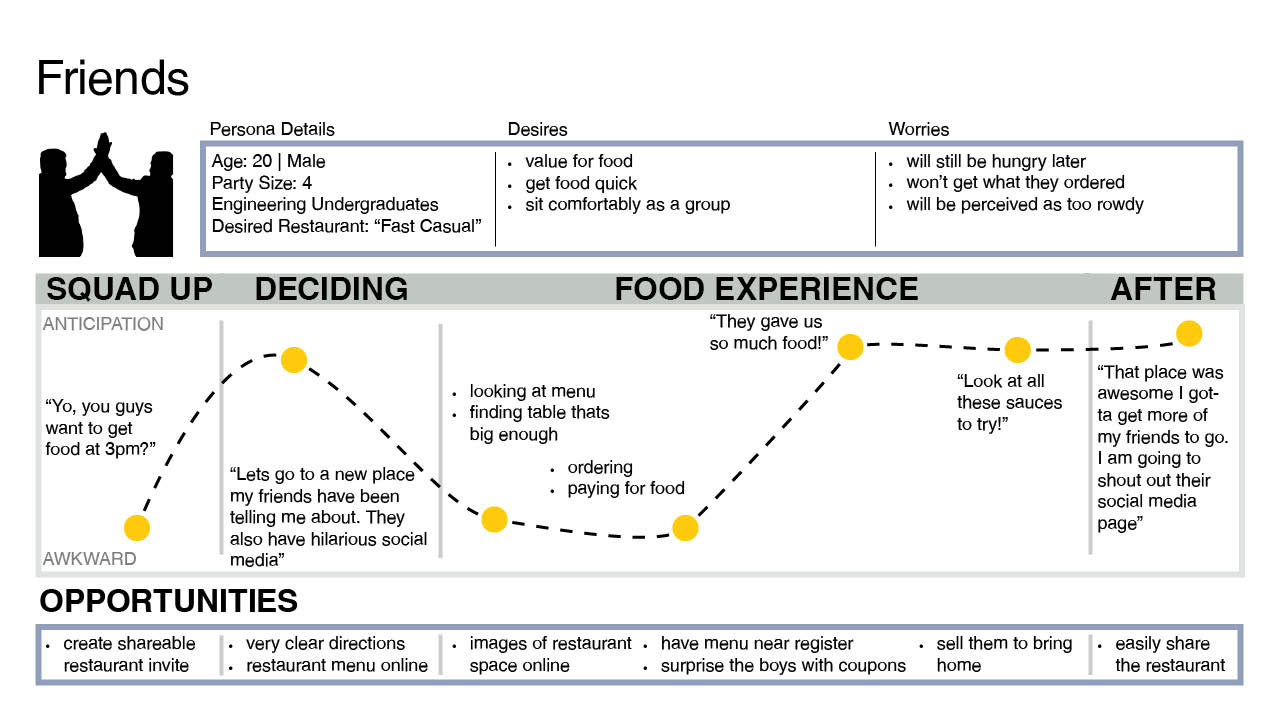
This is an image of a journey map for a potential customer.
Realization
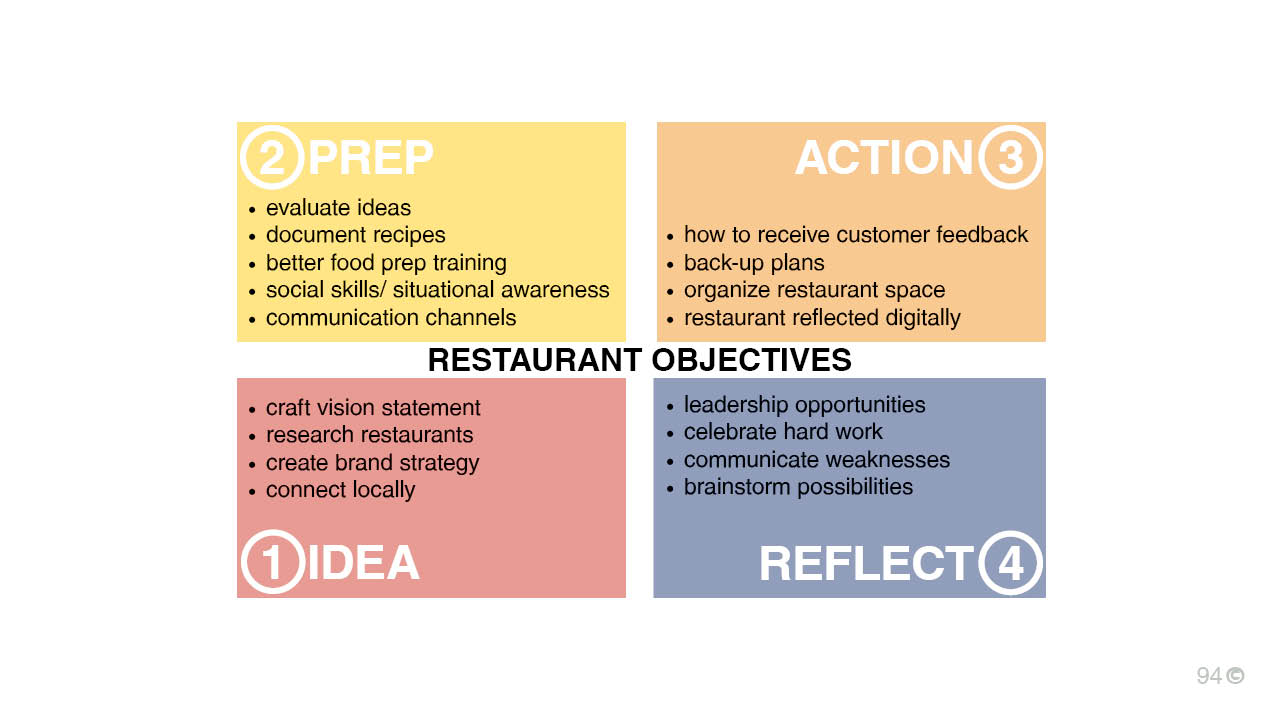
This is a graphic of the compiled insights derived from research, analysis, and synthesis. This graphic aims to highlight the areas in which design thinking can be applied to restaurant operations.
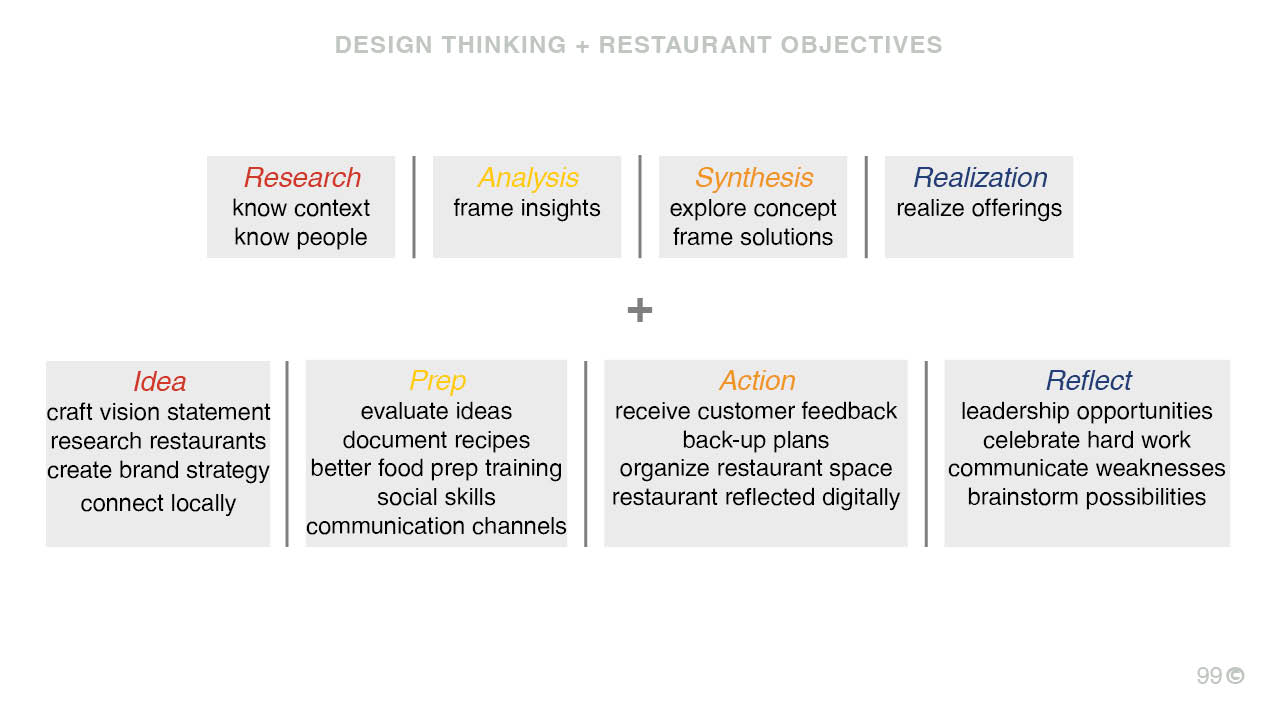
Testing
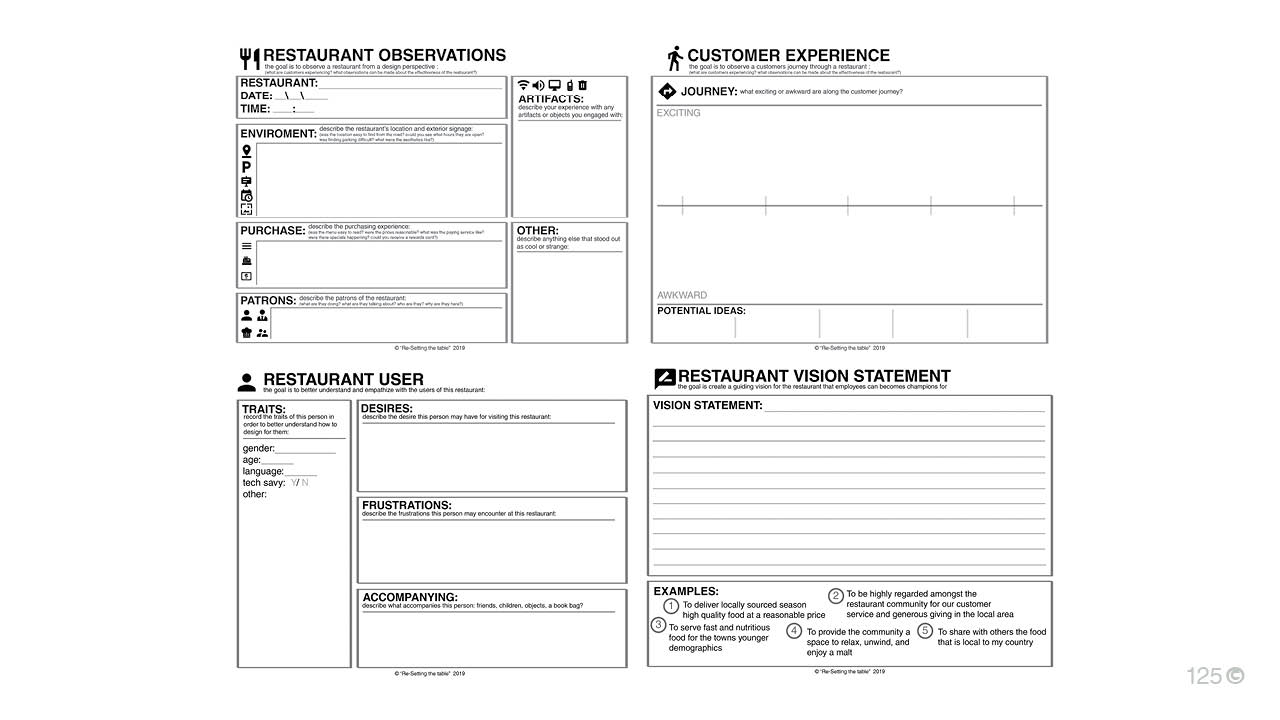
As a preliminary approach to introducing design thinking principles to small restuarant operations, I altered these 4 design thinking tools to adhere with a restaurant vernacular. The goal of these tools would be to equip restaurant owners with their use in order to help them better understand what their customer experiences.
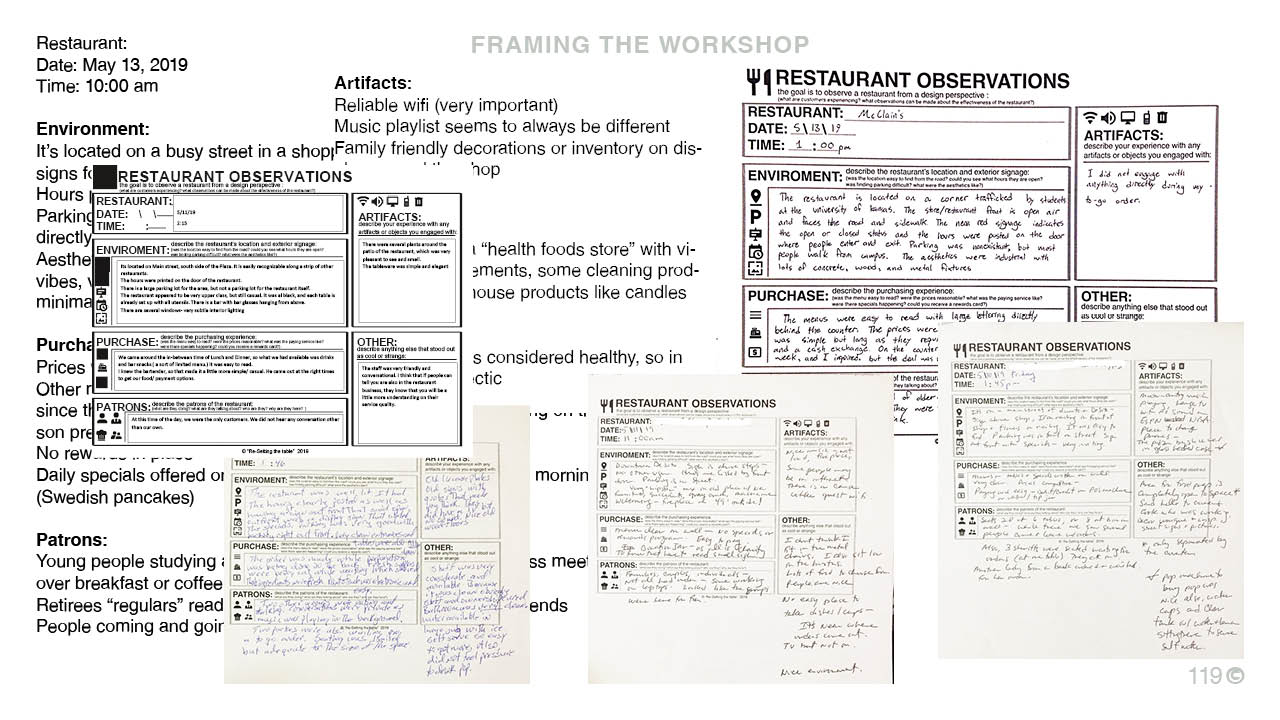
I tested one of these worksheets by tasking a group of non-designer participants to go into the field and observe a restaurant. The observations they had were spot on to what a user experience designer would observe.
1. Participants introduced to design thinking
2. Equipped with workshop tools for long term use
3. Social value generated amongst participants and host
4. Publicity about the workshop
5. Enriches the residents to have better food options
6. Enriches the city to have better restaurants
7. Long term enhancement of workshop
Conclussion
During the process of the service design research project, I quickly realized how complicated restuarant process are. Running a small restaurant that is sustainably profitable is extremely hard. An interesting determinant I uncovered for success is the restaurant owner's ability to seek out advice and listen to others. My research in this area will continue. In my local town, a fully volunteer run morning cafe has greatly impacted the towns people's daily lives. As described by Ray Odenburg in The Great Good Place 3rd spaces are needed in small town america and through introducing willing operators to basic design principles could lead them to a higher chance for success.